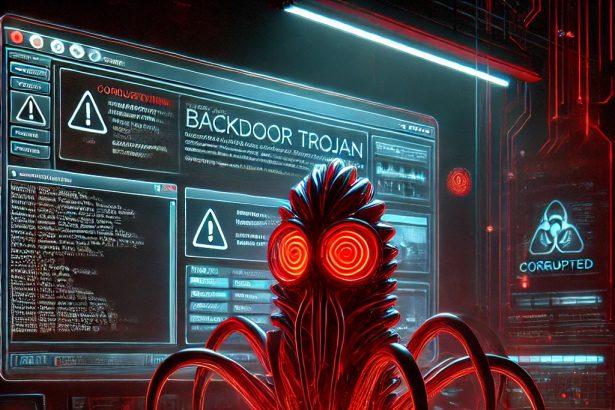PureHVNC is a sophisticated Remote Access Trojan (RAT) that grants cybercriminals covert control over compromised Windows systems. This malware has been actively distributed through deceptive social engineering campaigns, notably via counterfeit Kling AI websites promoted through Facebook ads. Once installed, PureHVNC enables attackers to execute a range of malicious activities, including data theft, surveillance, and unauthorized remote operations, all while remaining undetected by the victim.
Threat Overview
PureHVNC employs a two-stage infection process. Initially, a loader—often obfuscated using .NET Ahead-Of-Time (AOT) compilation—executes anti-analysis checks and establishes persistence. Subsequently, the core PureHVNC payload is deployed, providing attackers with hidden Virtual Network Computing (hVNC) capabilities. This allows them to interact with the system through an invisible desktop session, facilitating activities such as credential harvesting, cryptocurrency wallet theft, and real-time surveillance.
Threat Details
| Attribute | Details |
|---|---|
| Threat Type | Remote Access Trojan (RAT) |
| Detection Names | Win64:MalwareX-gen [Misc], QD:Trojan.GenericKDQ.99E2409702, MSIL/TrojanDownloader.Agent.PEP, Backdoor.MSIL.Crysan.kaz, Trojan.Gen.MBT |
| Symptoms of Infection | Typically asymptomatic; operates stealthily without noticeable signs to the user. |
| Damage | Theft of sensitive data (credentials, financial information), unauthorized remote access, potential inclusion in botnets, and further malware deployment. |
| Distribution Methods | Phishing emails with malicious attachments, deceptive online advertisements, social engineering tactics, and software cracks. |
| Danger Level | High |
| Removal Tool | SpyHunter |
In-Depth Analysis
How Did I Get Infected?
Victims often encounter PureHVNC through social engineering schemes. One prevalent method involves fake Facebook ads impersonating Kling AI, an AI-powered media platform. These ads redirect users to fraudulent websites like klingaimedia[.]com or klingaistudio[.]com, which prompt users to download malicious files disguised as AI-generated content. Opening these files initiates the PureHVNC infection process.
What Does It Do?
Once active, PureHVNC establishes a hidden desktop session, allowing attackers to:
- Monitor user activities in real-time
- Capture screenshots when specific keywords (e.g., banking or cryptocurrency terms) are detected
- Extract data from Chromium-based browsers, including saved credentials and cookies
- Access cryptocurrency wallets and email clients
- Deploy additional malicious payloads or tools
The malware’s stealthy nature ensures that these activities occur without the user’s knowledge.
Should You Be Worried?
Absolutely. PureHVNC poses significant risks, including identity theft, financial loss, and unauthorized access to personal and professional information. Its ability to operate undetected makes it particularly dangerous, as users may remain unaware of the compromise until substantial damage has occurred.
Manual Removal of Trojan Malware
Important: Manual removal is not recommended for beginners. It involves interacting with system files and the Windows Registry, which, if done incorrectly, can lead to system issues.
Step 1: Restart in Safe Mode with Networking
Booting into Safe Mode disables unnecessary startup programs, including most malware.
- Press Windows + R, type
msconfig, and hit Enter. - In the System Configuration window, go to the Boot tab.
- Check Safe boot, then select Network.
- Click Apply and restart your computer.
Step 2: Terminate Malicious Processes
- Open Task Manager using Ctrl + Shift + Esc.
- Navigate to the Processes or Details tab.
- Identify any unusual or unrecognized processes. Be cautious—do not stop critical Windows processes.
- Right-click a suspicious process, choose Open File Location, then End Task.
- Delete the associated file from the opened folder.
Step 3: Delete Trojan Files
- Press Windows + R, type
%appdata%, and press Enter. - Check for any unknown folders created recently.
- Repeat the same for these directories:
%localappdata%C:\Program FilesC:\Program Files (x86)C:\Windows\Temp
- Delete any folders or executables related to the Trojan.
Step 4: Clean Up the Windows Registry
- Press Windows + R, type
regedit, and press Enter. - Go to these registry paths:
HKEY_LOCAL_MACHINE\SOFTWARE\Microsoft\Windows\CurrentVersion\RunHKEY_CURRENT_USER\SOFTWARE\Microsoft\Windows\CurrentVersion\Run
- Look for registry entries with unusual names or links to suspicious files.
- Right-click and delete the unwanted entries.
Tip: Back up your registry before making changes by clicking File > Export in the Registry Editor.
Step 5: Reset Your Web Browsers
Malicious Trojans often tamper with browser settings to redirect users to unwanted sites.
Chrome
- Settings > Reset and clean up > Restore settings to their original defaults.
Firefox
- Help > More Troubleshooting Information > Refresh Firefox.
Edge
- Settings > Reset settings > Restore settings to their default values.
Step 6: Perform a Full System Scan with Windows Defender
- Open Windows Security from the Start menu.
- Click Virus & threat protection > Scan options.
- Choose Full Scan and click Scan now.
Step 7: Update Windows
- Go to Settings > Windows Update.
- Click Check for updates and install all available patches.
Method 2: Automatically Remove Trojans Using SpyHunter
Manual removal can be effective, but it’s time-consuming and may leave hidden components behind. SpyHunter is a trusted malware removal tool that automatically detects and eliminates Trojans and other threats.
Step 1: Download SpyHunter
Use the official download link: Download SpyHunter
Follow these instructions for installation: SpyHunter Download Instructions
Step 2: Install the Program
- Locate the downloaded file, usually SpyHunter-Installer.exe.
- Double-click it and follow the on-screen steps to complete the installation.
- Launch SpyHunter when finished.
Step 3: Scan Your PC
- Click the Start Scan Now button on the SpyHunter dashboard.
- Allow the scan to complete (it may take several minutes).
- Review the detected items.
Step 4: Remove Threats
- Click Fix Threats.
- SpyHunter will quarantine and remove the detected Trojan files automatically.
Step 5: Restart Your PC
Once the cleanup is finished, restart your system to finalize the changes.
Trojan Prevention Tips
- Avoid downloading software from unofficial sources.
- Be wary of email attachments, even from known contacts.
- Keep Windows and applications updated with the latest patches.
- Use a reputable security program like SpyHunter for active malware protection.
Conclusion
PureHVNC is a potent Remote Access Trojan that leverages advanced evasion techniques and social engineering to infiltrate systems. Its capacity to provide attackers with stealthy, persistent access underscores the importance of vigilance and robust cybersecurity measures. Users should exercise caution when interacting with unsolicited advertisements or downloading files from unverified sources.




